There is travel and there is travel. Last Sunday we travelled to Assam sitting in the comforts of an artfully done-up apartment at Chittaranjan Park, New Delhi. Sneha Saikia, a popular home chef in South Delhi, organises these small tables for approximately 6 diners at her home in C.R. Park. She cooks amongst others, Assamese and Bengali cuisine. This afternoon we were part of her guests.
She had a Monsoon Menu for lunch and she served an Assamese spread. Home-cooked food in Delhi is a rarity. Moreover, we were not very aware of authentic Assamese food in Delhi or Gurgaon. What is Assamese food we wondered? Fortunately, Sneha had shared the menu with us earlier and it read so exotic. With very little background, we were bubbling with expectation.
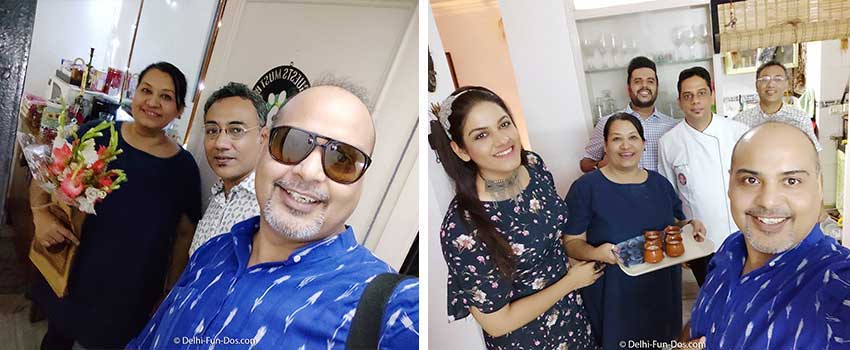
It was unusual weather in Delhi that afternoon. Dry in most parts there was light drizzle in some areas. Somehow we reached C.R. Park soon after 1 p.m., the rendezvous hour. This area was all dry and Sneha found it difficult to believe that it drizzling at AIIMS and pouring in Gurgaon.
After initial hellos with other guests, she promptly served a welcome drink – Thekeda Sharbat – something like kokum but not quite. It was mild and a fusion of sweet with mild sour. Sneha showed us the fruit that she had used for this drink. She had sourced that from Assam.
In the course of the afternoon, Sneha enlightened us about basic principles as to how to make Assamese food. We could see there is wide use of herbs and soft flavours. A host of seasoning that Sneha had used was sourced through her mother in Assam. There were clear Bengali influences as well.
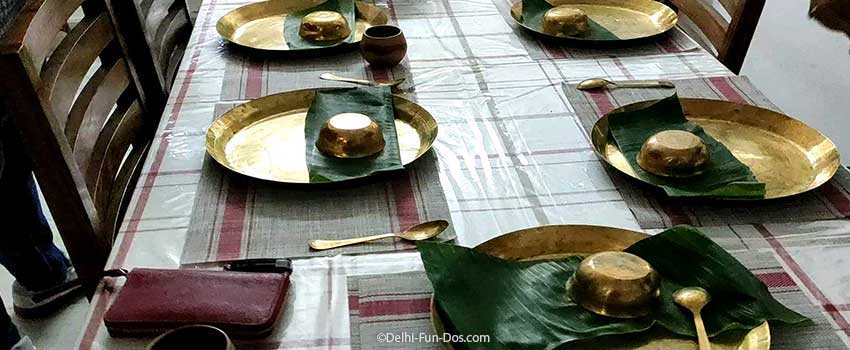
For instance, it was time travel to see kansa or bell metal plates and bowls laid out in the table setting. We were nostalgic about our childhood when bell metal utensils were used for daily meals and definitely for drinking water in a Bengali household. Gradually ceramics and fibre crockery took over and now the kansa utensils are relegated to trunks only to be taken out during Durga Puja or other festivals.
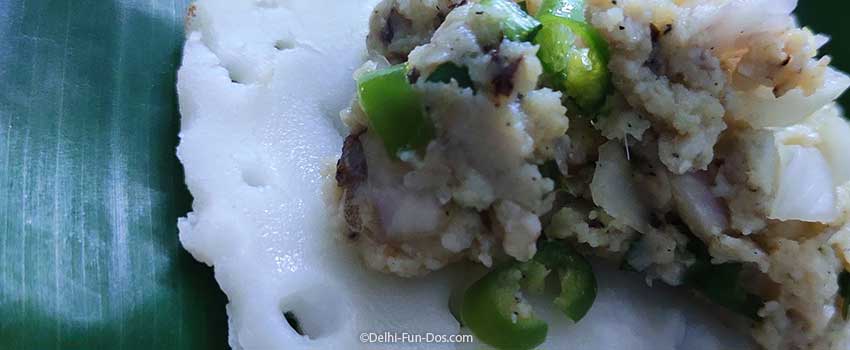
Like a Bengali meal, the Assamese meal also started with light dishes and climaxed with rich vegetarian or non-vegetarian items. It was a sit-down lunch and Sneha started us off with a rice cake with a minced Bata fish topping-Pani Pitha. The topping was minimally cooked with some refreshing herbs and flavours. We felt heaven in our mouths from the word go.
Thereafter she served a variety of vegetarian dishes that comprised of not-so-common vegetables that were minimally spiced and cooked e.g. Anguli Pitha. We could recognise arbi or colocasia – not the root that is commonly eaten – but the stem in a tangy curry; Sojna Paator Bhaaji – fried drumstick leaves and mashed brinjals with a hint of bitter.
Every dish was extremely refreshing and the taste buds were going through multiple highs. All the dishes were to be had with rice as this was a staple in Assam. Sneha said that the Assamese version of the poori, that is lussi, is had as a snack and not during mail meals. She also served a lighter version of chana daal as something runny to have with rice.

Assamese food, again like Bengali food, is high on non vegetarian items. In this section, Sneha had made a red meat dish and a fish curry. The goat meat was mildly seasoned – she had just used ginger juice and green chillies to flavour this dish. We could not believe that red meat could be made so tasty without onions or garlic or spices. We had second helpings of this dish. The main course ended with a tangy katla fish curry – Masoor Tenga – that also doubled up as a palate cleanser. This was followed by dessert and tea; but more about that later.
Sneha, we could see, is a powerhouse of energy – was going back and forth between her kitchen and the dining table carrying the dishes course by course. That is how perhaps a Bengali, Assamese or Eastern meal is served – one dish after the other. Sneha, all along was sharing very interesting trivia about Assamese food. She would sometimes get a raw herb or fruit or something from the kitchen to show us. We could see how the dishes stood out from any other, including Bengali spreads we had had before.
For one, they generously use khar – an alkaline base in many of the dishes. The khar could be prepared from extracts of banana or a host of other vegetables, fruits, and even flowers. It lends a certain kick to a dish that we had not experienced in any prior meal.
The cuisine is distinguished by the spartan use of spices. The simple cooking over fire does not include the process of initial gentle frying of spices that is so common in many regions of India. Assamese food is flavoured with local exotic fruits, vegetables, and even flowers and seeds that are consumed fresh, dried, or fermented. For instance, Sneha served a chutney that seemed like a plain puree of sesame seeds and bhang or cannabis seeds. It reminded us of Bhaang Chutney from Uttarakhand. It had some texture and was yum in its simplicity.
She also showed us a variety of single-pod garlic which she had used instead of the regular garlic we get in the market. The use of oil is also extremely moderated and strong mustard oil is the preferred cooking medium. No wonder the meal is refreshing on the palette, easy on the system, and overall healthy.

Coming to desserts Sneha shared an interesting feature of an Assamese meal – apparently, there is no context of desserts post-meal! Yet, keeping up with the common tradition, she had prepared a rice pudding – Payox to give the standard sweet end to the meal. The beautiful aroma of thickened milk dominated this dish and we were glad she kept the sweetness low since we were very full by this time.
What helped settle the lunch were the flower teas she served. One was a red sweet and sour hot infusion which tasted a little like cranberry juice but definitely milder. The other was a drink she made by boiling dried Parijat or Shiuli flowers. The fragrance of these autumn flowers made the tea extremely relaxing and the orange stock lent the drink saffron hue.
Assam is high on chewing paan (betel leaf) or tambul as they call it at the end of a meal. They serve it in a beautiful brass cloche with the lid having a pointed top. Sneha also had paan for us – but we missed that at the last minute.
There are so many other details that are worth sharing but this post is already very long. Maybe you get in touch with Sneha at her Instagram handle @sneha_lata_saikia and book yourself to experience Assamese Food at her Table for 6. Given Sneha’s culinary skills, coupled with her knowledge and zeal to serve great food, you would surely cherish the proceeding.
Meanwhile, Chef Sneha, many thanks for taking us on such a lovely journey through the culinary scene of Assam. It was so familiar yet so so different from any meal we had before. We look forward to being on more such wonderful food trips with you.
Update May 2021:
North East home food in Delhi is not easy to find. Among the many chefs we know, only Sneha Saikia at C R Park runs a North East food kitchen in Delhi. Simple cooking techniques with a variety of vegetables and meat is her style. She sources most of her ingredients locally but some seasoning and herbs come from Assam.
Sneha routinely hosts guests at home under the name Table for 6 Luncheon where she serves mainly North Eastern cuisine. While serving the dishes course by course she explains the cooking style, the ingredients, their benefits, and so on. She also shares trivia such as Namghar in Assam or Goddess Kamakhya Temple in Guwahati. She ends the meal with jasmine or rice or shiuli or some other unique tea that helps to settle the meal.
From experience, we say Indian food is best enjoyed at home. We keep returning to Sneha’s Table whenever we crave for North Eastern food and conversation. Food talk is good talk. We were enlightened to know that there is a rich repertoire of vegetarian food in Assamese cuisine. Some of these dishes are without onion or garlic. Sneha told us that Assamese cooking is a zero-wastage approach. Most of the peels and skins of vegetables are used to cook other dishes or the alkaline Khar.
If you want to try a unique cuisine such as Assamese food in Delhi, try Sneha’s table and be charmed by her excellent cooking as well as vibrant hospitality.
Here’s a video of our latest experience where she specially cooked some pork dishes for us along with many other Assamese dishes.

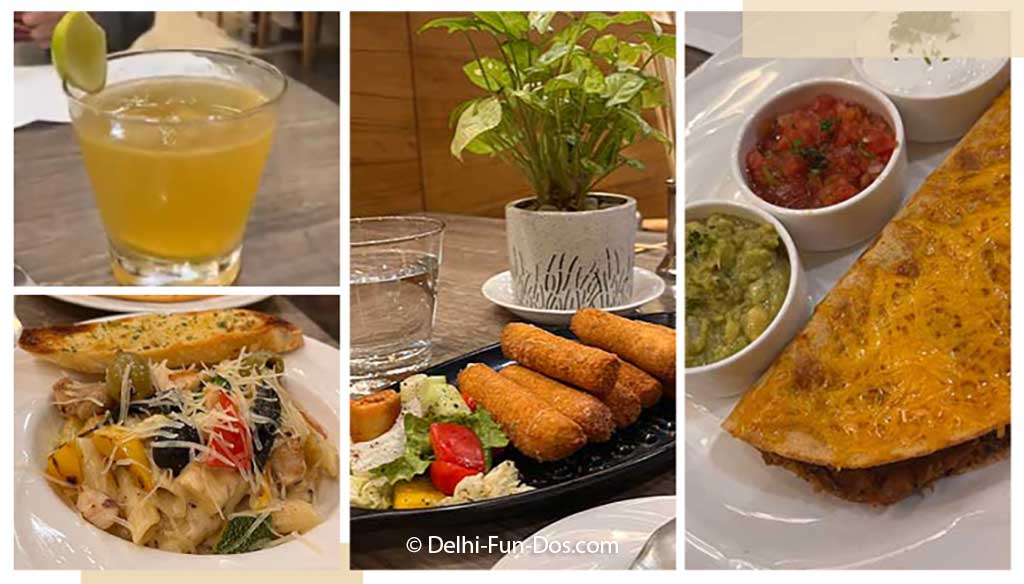
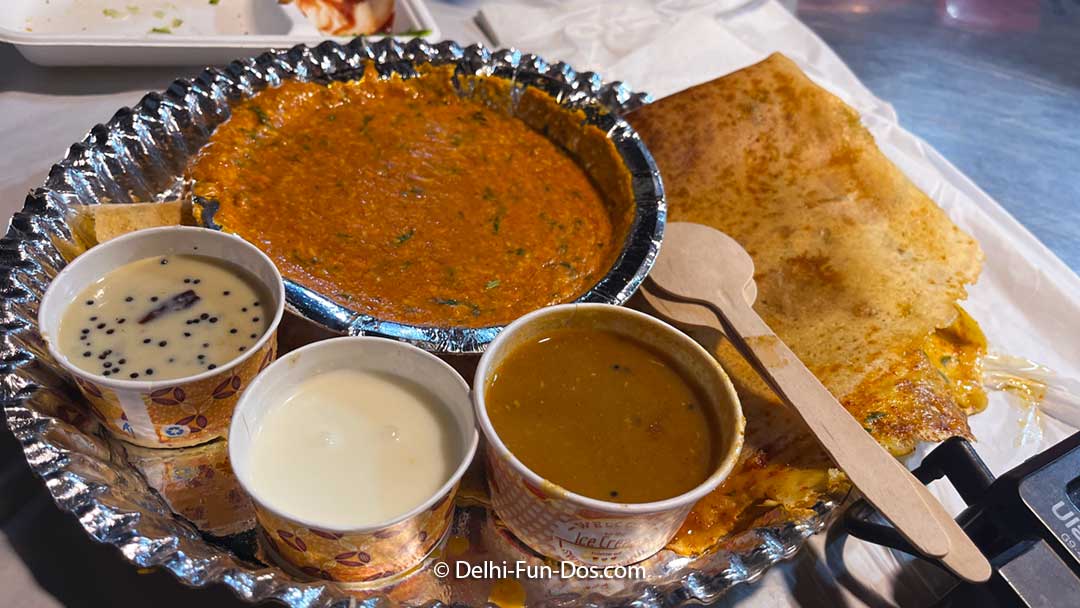
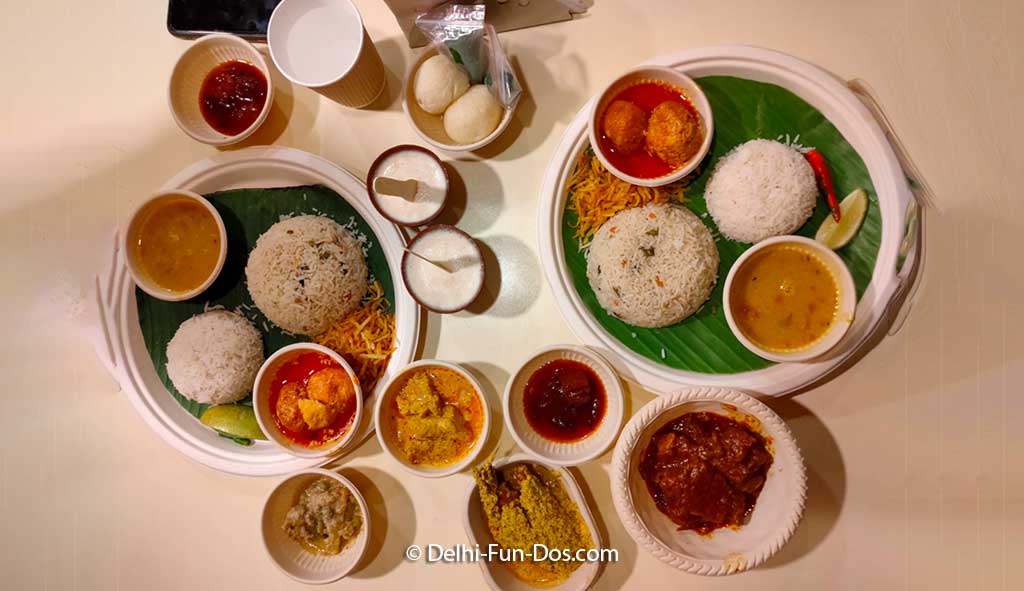
Whenever we visit a new country or place, we like to try out as much local food we can eat as possible during the trip. I like knowing their culture and history. Those dishes look absolutely delicious, hopefully we can try them out someday.
Assamese food are my favorite ones. I love the way they user spices.
Now we are fans too
Delicious home cooked meals—we just love food from Delhi and would love to try to recreate it at home!
The food looks so delicious. Seems like wonderful experience to be part of x
Laura
This blog post is so engaging, such a great read.. Bet you all had a blast in Delhi.m..!
What I’m loving about Assamese food afte reading this is their serving format- starting with lighter dishes and climaxing to the vegetarian meals. It must be so healthy; also with the herbs toppings.
Good to know about a place of Bengali cuisine in Delhi. Would def try the place if I am in Delhi someday.
Wow that’s a lot of yummy food for one day.
I too am not very much aware of assamese cuisine, might just have had assamese food a couple of times only. But I sure remember the kokum was very succulent. I am having a craving for home chef’s kokum now.
I have never explored northeastern food, the photos are great.